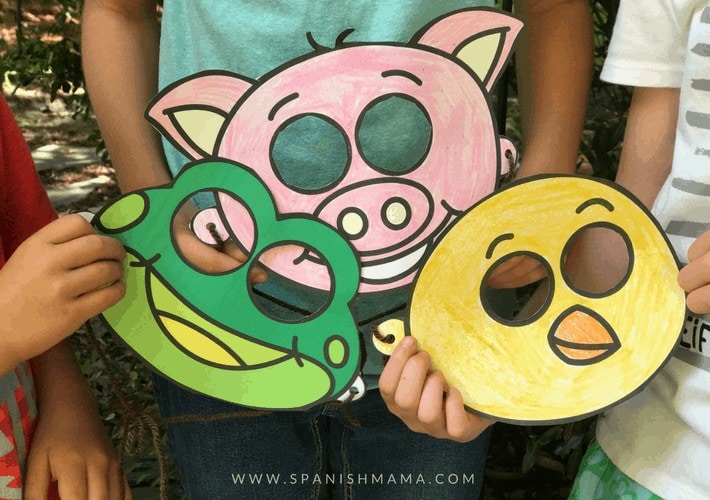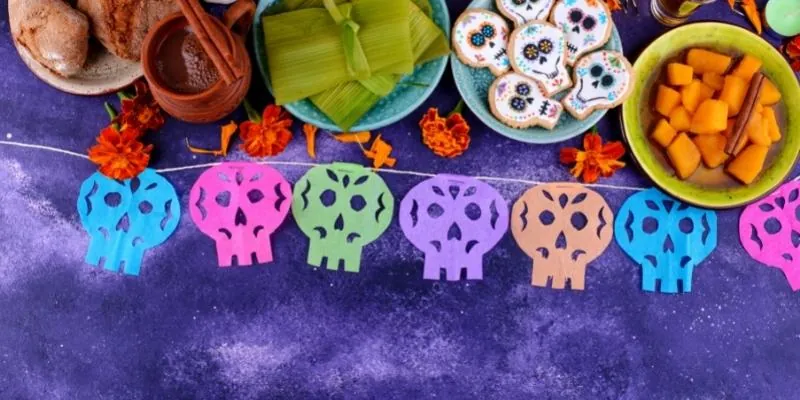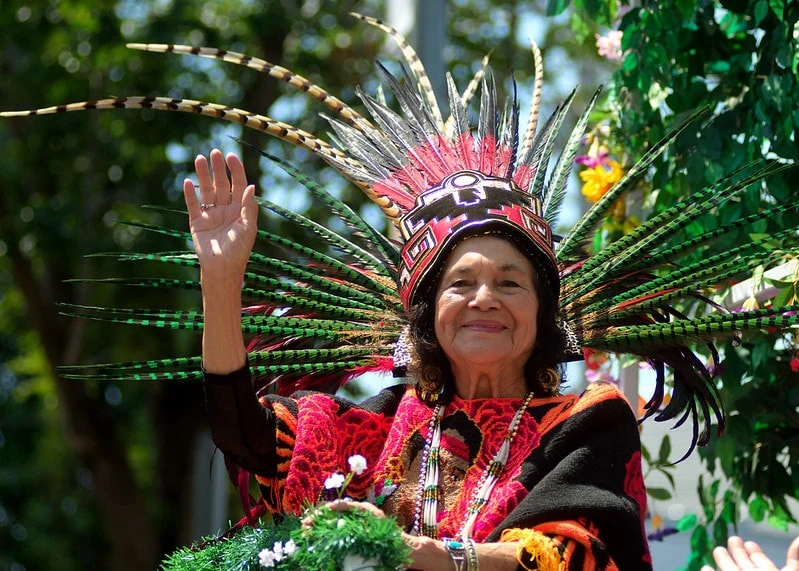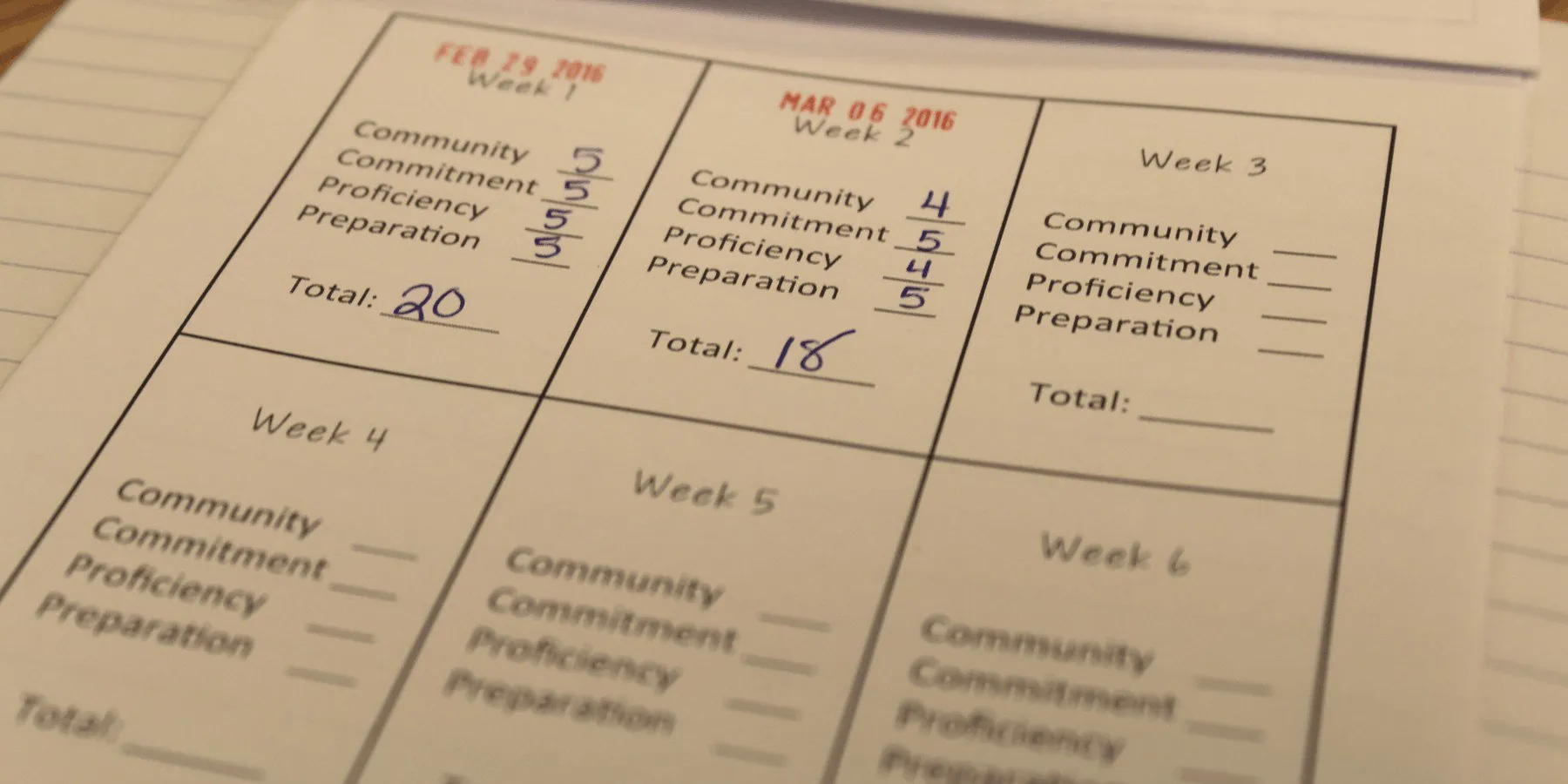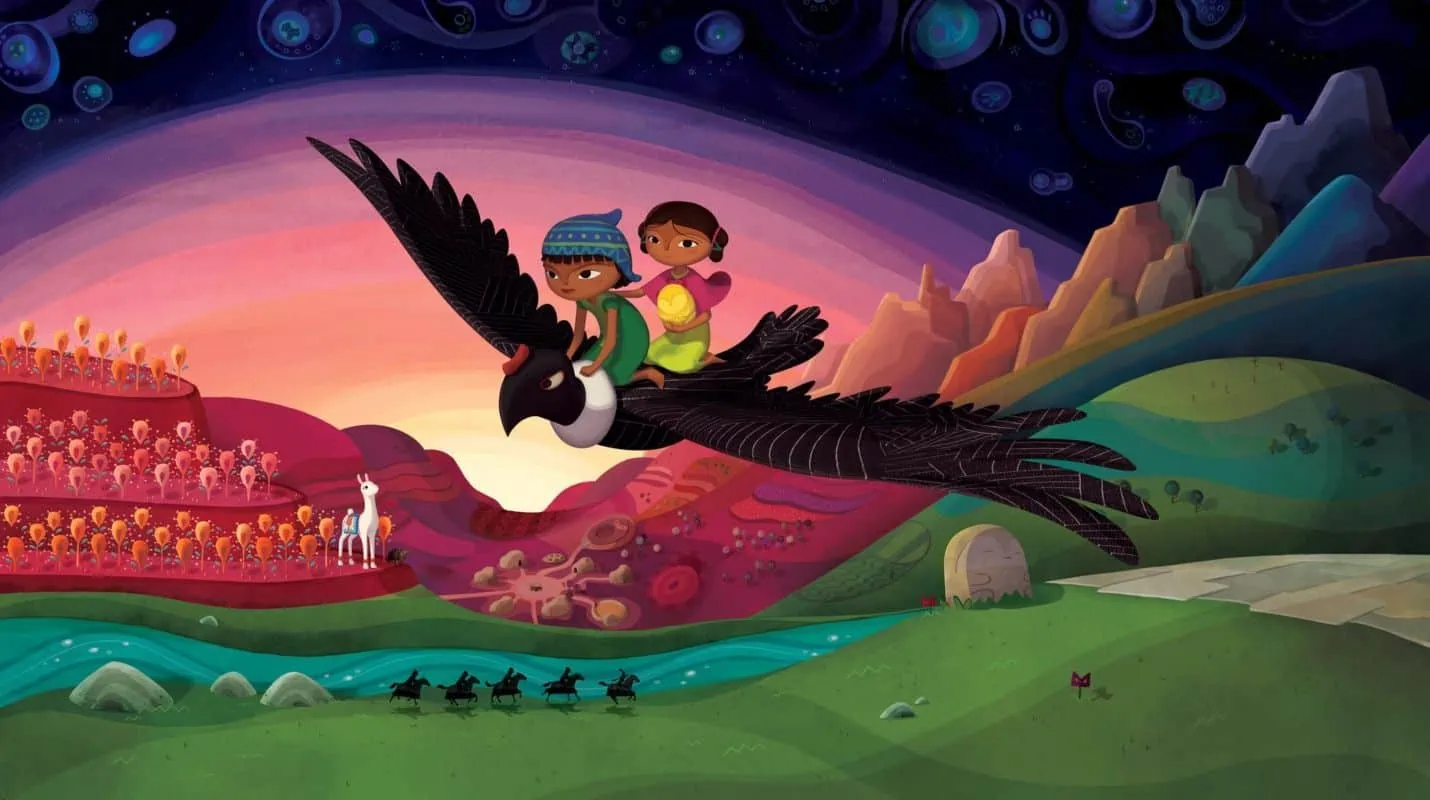Lesson 9: Simple Questions in Preschool Spanish
Inside: A preschool lesson that introduce asking and answering questions in preschool Spanish, through comprehensible stories and input.
Lesson 9 Goals: I can answer very simple questions about myself.
Target Structures: busca, ve, eres, soy
Click to see my outline of Preschool Spanish Lessons for Los pollitos dicen. (Each lesson provides enough material for multiple classes.)
Review: Sings the songs learned so far and do the ¿Cómo te llamas? ball chant. If you are incorporating calendar time, ask about the day, the weather (¿Hace frío? o ¿Hace calor?)
ACTIVITY 1
In the previous eight units, the students have heard es many times. Today, we’ll start working with eres a bit, and try it out with our animal words.
Gather or make some farm animal masks (they’re included in a Unit 3 purchase). Call up a student to try a mask on. Point to them and say, “¡Eres una vaca!” You can ask them questions, too: “¿Eres un pollito? Eres un elefante?”
At the beginning, I don’t worry about answering with soy– sí o no is a good start. If you use this activity over several classes, you can add in asking the class: “Es un caballo?” Throw in other questions, of course, if you want: “El caballo dice muu? Es verde or marrón?” Then go back to the student, “¿Dices muu o nii?”
ACTIVITY 2
TPR ve and busca (attach motions to them). There are lots of little games you can play to practice these words. Here are some ideas:
- Play “I spy” for ve. (If you want, you can play by saying “Veo un…” or “Veo con mi ojito pequeñito…”) Incorporate the colors, and big/small to give clues.
- Hide some objects in the room. Say, “Uno, dos, tres, busca!” and they try to find them.
- Have one student leave and give a small object to someone in the room. The student comes back, and everyone chants, “Uno, dos, tres, busca!” The student guesses who has it. You can give clues about which student it is by saying clothing colors.
ACTIVITY 3
Project and tell the story La gallina que busca a su pollito.
ACTIVITY 4
Story-tell using authentic books in Spanish. Oso pardo, oso pardo and ¿Eres mi mamá? would go well with lessons 7-9.
You *can* read the story in the full text, and let the kids see what language they recognize. I recommend narrating the book yourself, using only vocabulary that the students know. Since your students are probably non-readers, you are telling the story; they’re listening and enjoying the pictures.
If you’d like to hear the full story in Spanish, there are some read-alouds from native speakers below. You can always mute the sound and narrate yourself, too!
Stories for Activity 4:
WANT MORE?
If you like this lesson, click to purchase the whole unit! You’ll get an editable skit, a printable mini-book, and more.
